Tag: training
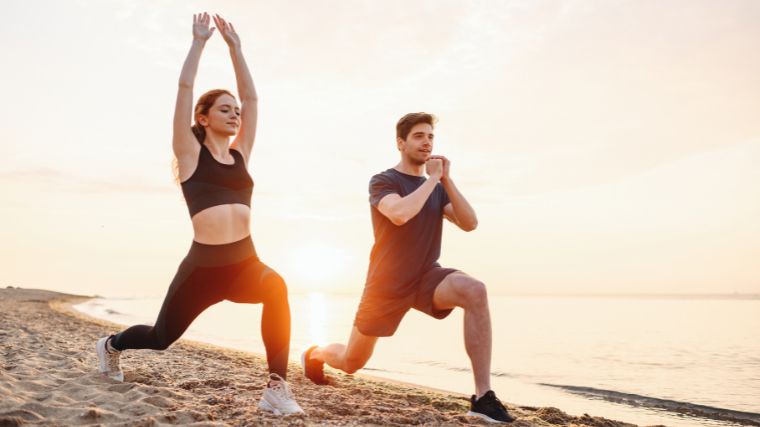
The Best Beach Workout You Can Do This Summer
Headed to the beach this summer? You’re not alone. According to Newsweek, Americans make a combined 400 million visits to the shore each year (yes, that’s a ton of visits). If you’re one … Read more
The post The Best Beach Workout You Can Do This Summer appeared first on BarBend.
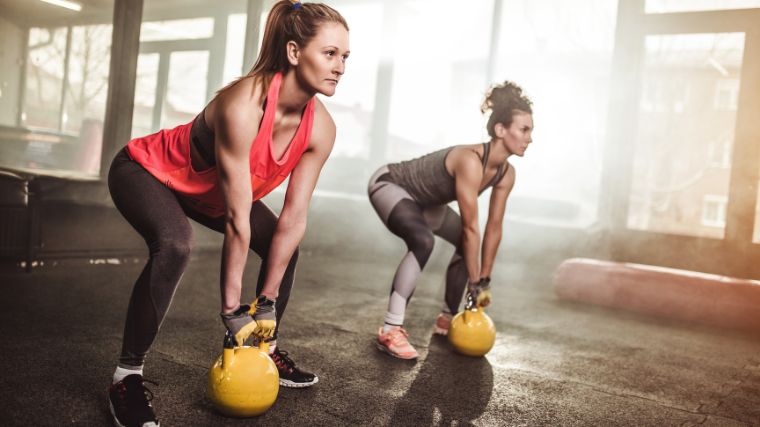
Try These Kettlebell Glute Workouts to Kick Your Butt Into High Gear
The humble kettlebell wears many hats in the weight room. For some, it serves as a damn good conditioning tool. Others love kettlebell exercises for their versatility. Still others use kettlebells as part … Read more
The post Try These Kettlebell Glute Workouts to Kick Your Butt Into High Gear appeared first on BarBend.
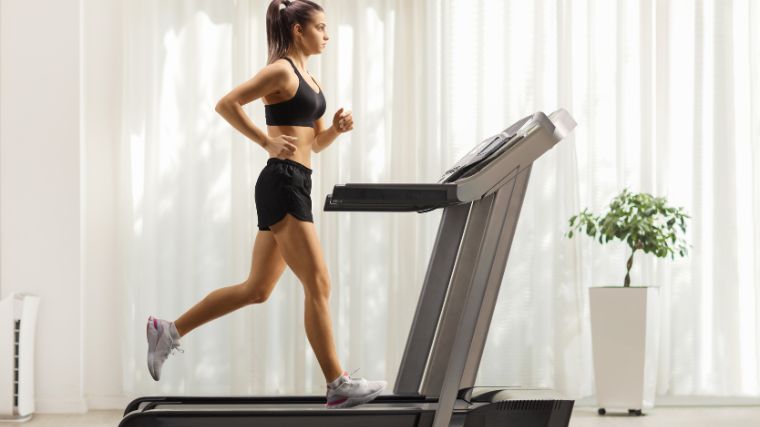
Should You Buy a Treadmill From Costco? Here Are the Pros and Cons
Despite frequent speculations that treadmills may one day be replaced atop the cardio equipment sales charts, they remain the kings of cardiovascular equipment. Not only are treadmills the most popular fitness devices used … Read more
The post Should You Buy a Treadmill From Costco? Here Are the Pros and Cons appeared first on BarBend.

Hardcore Calisthenics Arm Workout To Build Muscle Mass and Strength
Arm training and weights go together like peanut butter and jelly. To build bigger biceps, you’ve got to do the curls. Conversely, you must do cable pushdowns and barbell skullcrushers to craft horseshoe triceps. Or do you? With a little ingenuity, you can get an awesome arm workout with nothing but your body weight. If […]
The post Hardcore Calisthenics Arm Workout To Build Muscle Mass and Strength appeared first on Fitness Volt.

Calisthenic Shoulder Exercises and Workout
Calisthenics is probably the world’s favorite workout and has been for centuries. Simple bodyweight exercises like push-ups, pull-ups, and squats, and more technical moves like pistol squats and muscle-ups can be performed almost anywhere and anytime to develop functional strength and an aesthetic physique. However, like all forms of training, calisthenics will be more productive […]
The post Calisthenic Shoulder Exercises and Workout appeared first on Fitness Volt.

Best 12-Week Bodyweight Training Plan To Build Muscle Mass and Lose Fat
Most people relate body transformations with high-end training facilities, the latest machines, and jacked trainers. Although these things can add to your workout experience, they aren’t necessary for carving your dream physique. Most people never start their fitness journey because they cannot make the time to hit the gym. Others fall off the bandwagon because […]
The post Best 12-Week Bodyweight Training Plan To Build Muscle Mass and Lose Fat appeared first on Fitness Volt.

Muscle-Building Mishaps: The Top 5 Mistakes Holding You Back!
Building muscle and strength are time-consuming and energy-sapping processes. Simply put, your body is very resistant to change, and it needs to be cajoled and even bullied into getting bigger and stronger. However, all your hard work and dedication WILL pay off, and as the months turn into years, you’ll gradually transform your physique into […]
The post Muscle-Building Mishaps: The Top 5 Mistakes Holding You Back! appeared first on Fitness Volt.

How to Stay Safe While Lifting Heavy at the Gym
Lifting weights, especially HEAVY weights, is one of the best things you can do for your body. Heavy weights build muscle, strength, and bone density and are good for your general health and longevity, too. Stronger, more muscular people tend to live longer than weaker people (1).
Of course, the term heavy is relative and means different things to different people. A 300kg/660 pound deadlift would be immensely heavy for the average exerciser, but for champion strongmen Eddie Hall and Hafthor Bjornsson, 300kg is barely a warm-up.
So, for this article, you can read the word heavy as challenging. If you’ve got to work hard to lift it, then it’s officially heavy. For instance, 300kg can be light for a world-class strongman, but 40kg/85 pounds can be heavy for a regular person. It’s all a matter of context.
Regardless of your definition of heavy, and as beneficial as lifting heavy weights can be, it is not without risks. The good news is that those risks can be minimized or eliminated. While lifting heavy weights will never be 100% safe, we can reduce them to an absolute minimum.
In this article, we reveal the potential dangers of heavy lifting and share the best ways to stay safe.
The Potential Dangers of Lifting Heavy Weights
So, what are some of the dangers associated with lifting heavy weights? Continue reading and find out!
1. Muscle injuries
Muscle injuries are probably the most common danger associated with lifting heavy weights. Your muscles are made from bundles of muscle fibers, and those fibers can tear when exposed to very heavy loads.
Minor tears heal relatively quickly, often a week or two. However, full-thickness tears take much longer and often require surgery to repair them. Even mild tears are painful, and full-depth tears are excruciating.
2. Joint injuries
Heavy weights put a tremendous amount of stress on your joints. On the one hand, this can help make your joints more robust and more stable, but it can also cause acute and chronic injuries. Acute injuries are often the result of losing control of the weight, e.g., getting stapled under a heavy barbell during squats. Chronic injuries are typically the result of cumulative wear and tear.
3. Cardiovascular stress
While lifting heavy weights is an anaerobic activity, it still has an impact on your cardiovascular system. Straining to lift heavy weights can cause dramatic increases in your blood pressure, make you feel faint, rupture blood vessels, stress your heart, and may lead to long-term cardiovascular issues.
4. Hernias and abdominal strain
Lifting heavy weights causes increased intra-abdominal pressure, pushing your internal organs against your abdominal wall. This can result in abdominal strains or, if the organs protrude through the abdominal wall, lead to a hernia. While abdominal strains usually heal quite quickly, hernias often require surgery.
5. Technique breakdown
Good technique makes your workouts safer and more effective. However, very heavy weights can be hard to control and may affect your form – and not for the better. You may also be tempted to modify your technique to lift heavier weights, e.g., swinging a barbell up during biceps curls. Poor form significantly increases your risk of injury.
6. Back injuries
Strength training invariably involves your lower back. Ideally, your lumbar spine should be slightly arched to keep pressure off your intervertebral disks and ligaments. However, heavy weights can force your lower back into a rounded position, putting tremendous stress on what is actually quite a fragile structure. It’s much easier to maintain a neutral (slightly arched) spine when lifting light to moderate weights.
Related: 15 Ways to Avoid Back Pain in The Gym
7. Accidents
While training accidents are sometimes inevitable, the consequences are usually far worse when heavy weights are involved. For example, missing the J-hooks when reracking your bar after a set of bench presses or squats can be fatal. Accidents involving lighter loads are typically less severe.
How to Stay Safe While Lifting Heavy at the Gym
Now you know some of the dangers of lifting heavy, let’s look at some strategies for staying safe in the gym!
1. Don’t forget to warm-up
Avoiding training mishaps starts before you commence training. A thorough warm-up prepares your muscles, joints, and nervous system for what you are about to do.
Warm muscles contract and stretch more readily, making them more resistant to tearing. In contrast, mobility exercises increase synovial production, lubricating your joints and reducing wear and tear.
More importantly, warming up helps sync your muscles with the nerves that control them so you can contract them more effectively. This leads to an increase in force output, making those heavy weights a little easier to handle.
A strength training warm-up should include the following stages:
Pulse raiser – light cardio to increase circulation and tissue temperature.
Dynamic flexibility exercises – to lengthen muscles and increase range of motion.
Mobility exercises – movements to mobilize major joints.
Ramped sets – progressively heavier sets of your main exercises to potentiate nerves and increase strength.
Read more about warming up for strength training here.
2. Leave your ego at home
A lot of lifters are driven by their egos, and if they see someone lifting a heavy weight, they feel compelled to match or beat them. Other exercisers are guided by their egos to toss three plates on each end of the bar just because that’s what they think is expected of them. After all, why use tens when you can pile on the 45s? Those big plates DO look much more impressive!
Unfortunately, ego-driven lifting is a straight path to injuries and accidents. Plenty of lifters have been hurt or even killed attempting to lift more than they should.
Though it’s undoubtedly challenging, try to detach your ego from your workouts and focus on lifting mindfully. In most cases, a lighter weight lifted well will produce better results than a heavy weight lifted poorly.
Training is not the same as competition, and lifting for ego-driven reasons in training can lead to unnecessary injuries. Unless you are a powerlifter, weightlifter, or strongman competitor, it doesn’t actually matter how much weight you lift. Even then, most strength athletes only focus on their actual poundage as they peak for their next event.
So, no more ego-lifting. Weights are tools, and bigger is not always better.
3. Good form – always
There are two ways to do any exercise – the right way and the wrong way. The right way is safe and puts most of the tension on the muscles you are trying to develop. Your joints are in a biomechanically favorable position, and the risk of injury is as low as possible.
In contrast, the wrong way puts stress on nearby joints and muscles, taking it away from where you want it. This makes the exercise less effective, although it may mean you can lift more weight or crank out a few more reps.
There are lots of examples of poor form, including using your legs and back to lift the weight during curls, kicking your legs during chin-ups and pull-ups, bouncing the bar off your chest during bench presses, and rounding your lower back during squats and deadlifts. However, each of these technique faults increases your risk of injury.
Trump Junior Deadlift
If the weight you are using forces you to use poor technique, it’s too heavy for you. Lower the weight, perfect your form, and come back when you’re stronger.
4. Use a spotter
Lifting heavy weights when you’re alone is a recipe for disaster. All it takes is one badly racked barbell or a failed rep, and you could find yourself pinned under a heavy barbell, injured, or worse.
Minimize the risk of accident and injury by having a spotter on hand for your heaviest lifts. They can help you unrack and rerack your weights and help you out if you are unable to complete a lift.
That said, while a good spotter can be a literal lifesaver, a bad one is a liability, so make sure your spotter knows what they are doing.
Read more about spotters and spotting here.
5. Squat and press in a power rack
Even if you have a good spotter available, it’s generally best to squat and press heavy weights in a power rack. Power racks have adjustable safety bars that prevent your barbell from descending below a set point. This means you can lift as hard or as heavy as you want, safe in the knowledge that you won’t get pinned under the weight.
Most gyms have a power rack, and there are models made for the home workout market, too. While buying a power rack can be a sizable investment, having one could save your life. Also, power racks don’t tend to wear out, so once you’ve got one, it’ll provide decades of faithful service.
6. Progress slowly
If you want to lift heavy weights, it’s safest to build up to them gradually. It would be a mistake to try and lift too much weight too soon, and rushing into heavy training will invariably lead to injury and accidents.
Muscles tend to adapt to training quite quickly as they have a good blood supply and are highly adaptable. However, tendons and ligaments have poor blood supplies and adapt more slowly. Just because you feel strong enough to handle heavy weights doesn’t mean your body is ready for them.
So, increase your weights slowly. Don’t just slap another pair of 45s on the leg press. Instead, add a couple of fives. Then add two more fives the following week. Small, regular increases are much safer than big, irregular weight jumps. Plus, they’re more sustainable, leading to better long-term progress.
Remember, small, regular weight increases allow your tendons and ligaments to strengthen, reducing the risk of injuries and ensuring safer long-term heavy lifting.
7. Listen to your body
Mindfulness is a popular well-being watchword, usually associated with mental health. However, being mindful in the gym, i.e., listening to your body, especially when lifting heavy weights, can make your workouts considerably safer.
For example, if your lower back feels tight, your hamstrings are stiff, you’re tired, or you are distracted, you should think twice about lifting heavy. You might be okay, but your risk of injury is higher if you aren’t mentally and physically firing on all cylinders.
So, be mindful during your warm-up and early sets, and don’t be afraid to have an easy workout if you don’t feel 100%. As the saying goes, discretion is the better part of valor. In other words, showing restraint and thinking wisely can be more courageous than acting recklessly.
8. Use the right equipment
Weightlifting Belt
Your choice and use of equipment can have a big impact on the safety of your workout. For starters, you should always operate the machines in your gym in accordance with the instructions of the manufacturer or resident personal trainer.
Other equipment considerations include:
Weightlifting belt – wearing a lifting belt can help you generate more intra-abdominal pressure, supporting your lumbar spine and taking pressure off your intervertebral disks. Using a belt for heavy squats, deadlifts, etc., can make your workout safer.
Gym chalk – losing your grip can cause serious injury. While grip strength can always be improved, even strong hands can slip when they get hot and sweaty. Gym chalk helps keep your palms dry and prevents them from slipping.
Lifting straps – leading on from the point above, if your grip is prone to failing, lifting straps are a viable solution. With practice, you can use straps to make your grip all but unbreakable, which can be very helpful when lifting maximal weights.
Joint supports – supportive knee and elbow sleeves and wrist wraps can help protect your joints when you’re lifting heavy weights. They also help keep those areas of your body warm, which may prevent injuries. While no joint support will ever completely injury-proof your body, they do add an extra layer of protection and also provide some psychological support.
Shoes – most gyms insist that exercisers work out in shoes. This is for both hygiene and safety reasons. However, hard-soled minimalist and weightlifting shoes are generally best, as they won’t compress or collapse and provide you with a more stable base from which to lift. Super-soft sneakers can lead to foot, ankle, knee, and hip instability, which can cause injuries when you’re lifting heavy weights.
Collars – some exercisers see barbell collars as unnecessary. However, not using collars introduces another potential accident risk into your workout. All it takes is for a weight to start moving, and your barbell can suddenly become unbalanced, leading to serious accident and injury. Not using collars does not make you look cool, and using them will significantly lower your risk of injury.
Poundage rating – make sure your training equipment is rated for the weights you plan on lifting. For example, cheap barbells may only be rated for 250kg/550 pounds, and using heavier weights could cause the bar to bend or snap. Needless to say, if your barbell fails, your chances of injury are very high.
9. Respect your body’s need for rest and recovery
Lifting heavy weights takes a lot out of your body. It causes micro trauma to your muscles, overloads your tendon and ligaments, drains your energy, and taxes your central nervous system. All of these things need time to recover before they’re ready for another workout.
Rest, recovery, and sleep are all critical for safer heavy lifting. If your body is not well rested, your chances of injury are significantly higher. Make sure your training plan includes easy days and days off to ensure you are rested and ready for your heavier workouts.
10. Learn to breathe and brace correctly
Even if you wear a weightlifting belt, you must still brace your abs to generate intra-abdominal pressure to support your lumbar spine.
This is how you brace:
Tense your abs like you’re expecting to get punched in the stomach. Pull up your pelvic floor like you’re training to stop the flow of urine.
Inhale into your abdomen without allowing it to bulge outward. Your entire midsection should feel solid and strong.
Maintain this abdominal bracing throughout the lift, keeping your core tight and stable.
Exhale after completing your rep, and then repeat.
It’s point #4 that’s especially important, as holding your breath significantly increases your blood pressure. When you exhale depends on the exercise you’re doing, and you should breathe out when you don’t need to rely on your core to support the weight, e.g., when you’re standing fully upright or the load is closest to your base of support.
Prolonged breath holding when lifting heavy weights can also lead to fainting, which can also cause serious injury if you strike your head against something hard:
Related: 6 Reasons Which Can Cause A Lifter To Pass Out After Heavy Deadlifts
FAQ
Do you have questions about heavy lifting and gym safety? No problem, because we’ve got the answers!
1. How dangerous is gym training compared to other recreational activities?
All this talk of accidents and injury could have you thinking twice about renewing your gym membership. However, gym mishaps, accidents, and injuries are actually relatively rare compared to other recreational activities (2).
Injury rate for exercise and exercise equipment: 5.3 injuries per 1000 hours
Injury rate for football: 11.7 injuries per 1000 hours
Injury rate for basketball: 8.2 injuries per 1000 hours
Injury rate for soccer: 7.1 injuries per 1000 hours
Injury rate for baseball: 6.7 injuries per 1000 hours
As you can see, you are more likely to hurt yourself playing soccer or basketball than lifting weights. However, even though the risks are low, you should still endeavor to minimize them by putting the information in this article into action.
2. What is the Valsalva maneuver, and is it dangerous?
The Valsalva maneuver is a breathing technique used during strength training to improve core stability and is part and parcel of abdominal bracing. By taking a deep breath, holding it, and tightening the core, the Valsalva maneuver increases intra-abdominal pressure, offering support to the spine during heavy lifts.
However, the Valsalva maneuver can also increase blood pressure and stress on the cardiovascular system. For individuals with certain health conditions, this may pose certain risks, including:
Cardiovascular stress.
Increased blood pressure.
Risk of fainting or dizziness.
Strain on the heart and blood vessels.
Unsuitable for individuals with hypertension or heart issues.
So, while the Valsalva maneuver can provide support during heavy lifts, it’s crucial to be aware of these potential risks and use it safely and sensibly. If you have any health concerns or doubts, consult with a qualified fitness professional or healthcare provider for personalized guidance.
3. What safety precautions should I take when using weightlifting machines?
Most people assume that resistance training machines are safer than free weights. However, that’s not necessarily the case, and machines can be dangerous, too. Take the following safety precautions to make your machine workouts as safe as possible:
Adjust the seat, handles, leg pads, etc., to match your height and limb length. Machine pivot points should align with your joints.
Check that the machine is in good working order, e.g., cables are not worn, and bolts are correctly tightened.
Ensure that weight selection pins are placed correctly and won’t pop out.
Use the machine for the exercise it was designed for.
Engage any safety catches to ensure the weight cannot fall on you, e.g., on Smith machines and leg presses.
Understand that resistance machines are made to fit average-sized exercisers. If you are taller, shorter, or wider than average, you may not be able to use some machines safely.
4. What is ramping, and how can it help me avoid injuries when lifting heavy weights?
Ramping is usually the last stage of a strength training warm-up. It generally involves doing several progressively heavier sets before you begin your main workout. For example:
10 reps 20kg/45 pounds (empty barbell)
7 reps 40kg/90 pounds
5 reps 60kg/135 pounds
3 reps 80kg/175 pounds
10 reps 100kg/225 pounds (first work set)
As a rule, the heavier your weights, the more ramped sets you’ll need to do to reach it. However, your weight increases can also be larger. Note how the rep count decreased as the weight increased in our example. This ensures you save your energy for your coming workout while still readying your muscles for the workout to follow.
The benefits of ramping include the following:
Preparing your muscles and nervous system for the workout to follow
Making your first work sets feel easier by acclimating your muscles to training weight
Providing an opportunity to practice and fine-tune your technique
Allowing you to assess your physical and mental state so you can adjust your workout if required.
5. What are some effective strategies for preventing and managing muscle soreness after lifting heavy weights?
Heavy lifting can leave you with severe delayed-onset muscle soreness, or DOMS for short. DOMS is thought to be caused by muscle microtrauma and lactic acid accumulation. However, this theory is not definitive, and DOMS may be caused by other mechanisms.
Regardless of the cause of DOMS, strategies for preventing and managing it include:
Warm up before you work out.
Increase your weights gradually.
Follow a training program that’s appropriate to your current fitness and strength.
Cool down and stretch after your workouts.
Remain physically active between workouts.
Get a massage or try foam rolling.
Try hot/cold contrast showers or baths.
DOMS is a natural part of working out, especially when you train hard and lift heavy weights. However, if your muscle soreness is so severe that it affects your ability to perform everyday activities, you may have overexerted yourself and should revise your training program.
Read more about delayed onset muscle soreness here.
Closing Thoughts
Lifting heavy weights at the gym can be immensely rewarding, but there are also potential risks. While heavy lifting builds muscle, strength, and bone density, there are also potential dangers, including muscle and joint injuries, back problems, and cardiovascular stress. The good news is that most of these risks can be minimized with proper safety measures.
To stay safe while lifting heavy:
Start every workout with a thorough warm-up to prepare your muscles, joints, and nervous system.
Focus on lifting with good form to reduce the risk of injury.
Always have a spotter for heavy lifts, and use a power rack when squatting and pressing.
Progress gradually, allowing tendons and ligaments time to adapt to heavier loads.
Listen to your body and be mindful of your physical and mental state during workouts.
Respect your body’s need for rest and recovery, and avoid heavy lifting when you’re tired.
Adjust and use the machines in your gym correctly and for their intended purpose.
Learn to breathe and brace correctly to support your spine and protect cardiovascular system.
Remember, while lifting heavy weights can be beneficial, safety should be a priority. Follow these strategies, consult with professionals when needed, and lift mindfully to achieve your fitness goals without unnecessary risks. Happy lifting, and stay safe!
References:
Srikanthan P, Karlamangla AS. Muscle mass index as a predictor of longevity in older adults. Am J Med. 2014 Jun;127(6):547-53. doi: 10.1016/j.amjmed.2014.02.007. Epub 2014 Feb 18. PMID: 24561114; PMCID: PMC4035379.
Horton R. GBD 2010: Understanding disease, injury, and risk. Lancet. 2012 Dec 15;380(9859):2053-4. doi: 10.1016/S0140-6736(12)62133-3. PMID: 23245595.
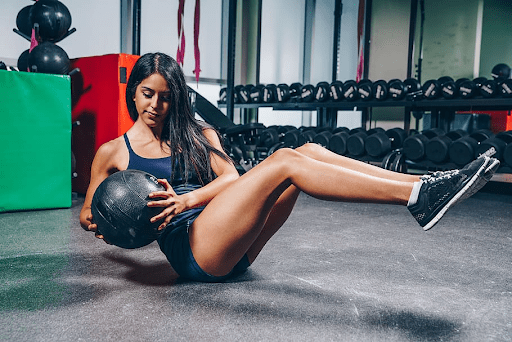
Core Workouts To Develop Abdominal Muscles
A strong, chiseled midsection with well-defined abs is a fitness goal that many aspire to achieve. Beyond the aesthetics, a strong core offers many benefits, from improved posture and reduced risk of injury to enhanced athletic performance and functional fitness. However, building a solid midsection requires a focused approach that combines targeted core workouts, […]
The post Core Workouts To Develop Abdominal Muscles first appeared on .
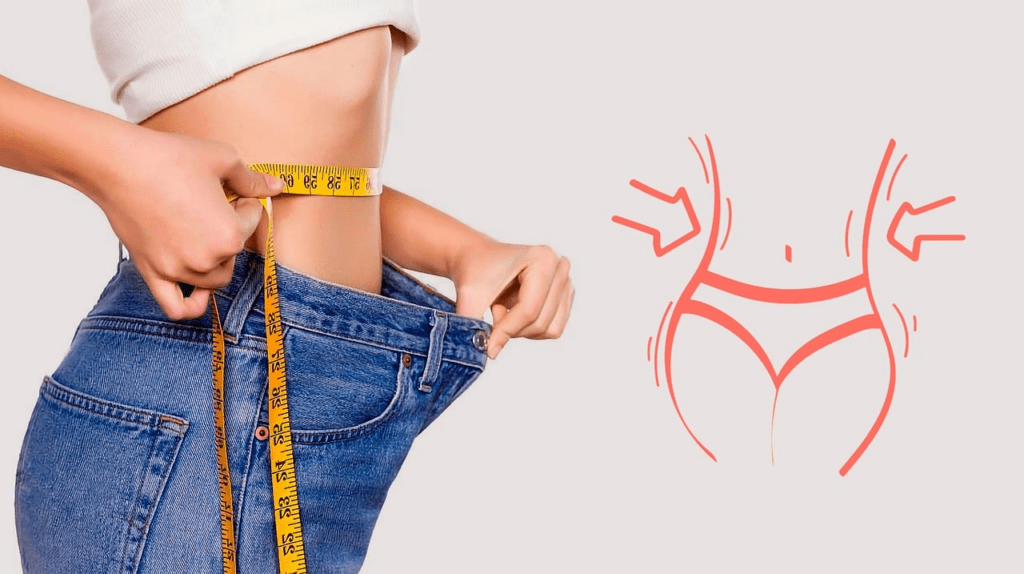
Sleep and Weight Loss: How to Improve Your Sleep Habits
Have you ever wondered why you struggle to lose weight despite your best efforts to eat healthy and exercise regularly? The answer might lie in sleep. The quality and duration of your slumber play a pivotal role in your weight loss journey. It may sound surprising, but numerous studies have highlighted the crucial role […]
The post Sleep and Weight Loss: How to Improve Your Sleep Habits first appeared on .
